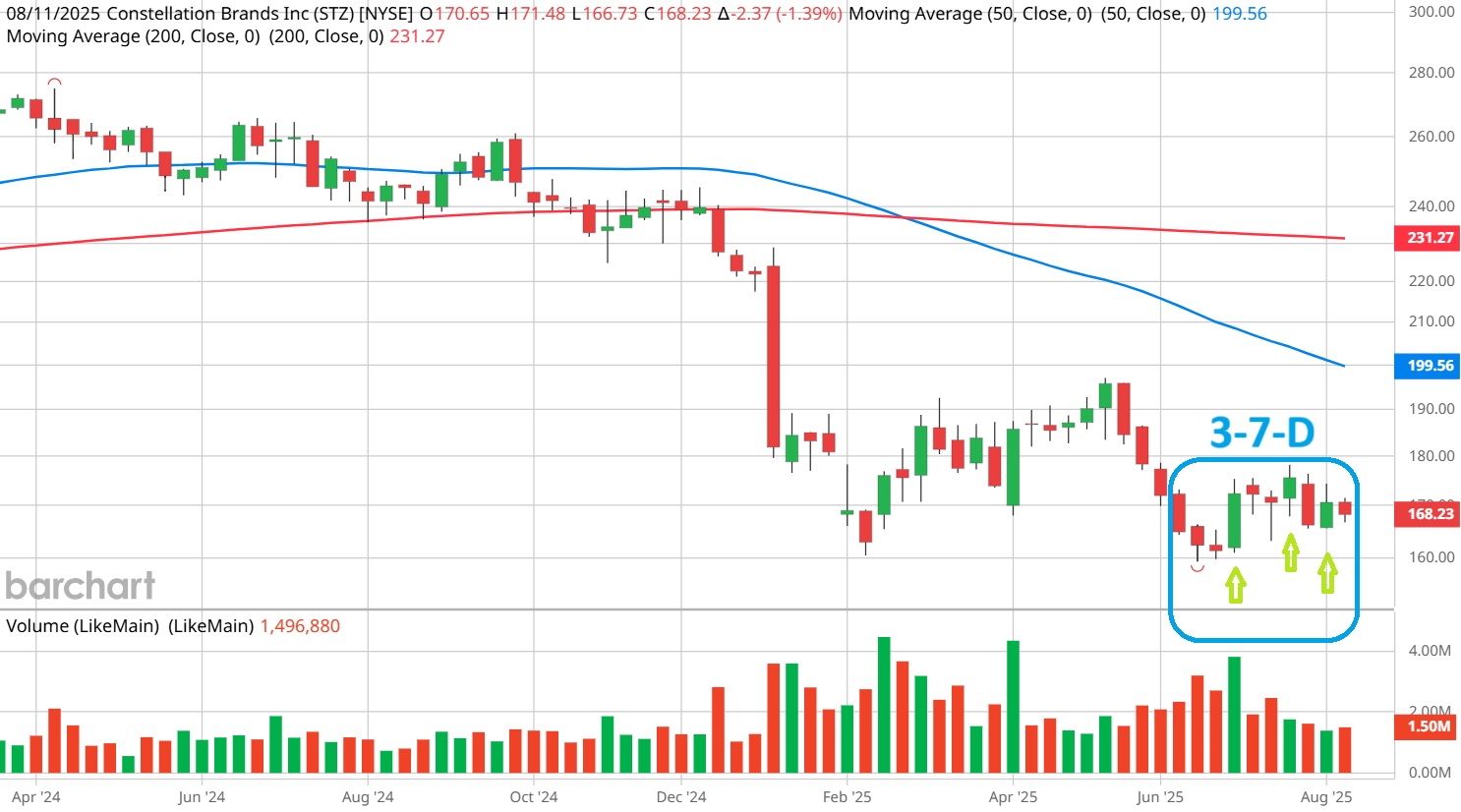
Irrespective of your intentions to trade options or not, it’s always useful to consider the securities making the rounds in Barchart’s Unusual Stock Options Volume screener. Per the investment research platform, the screener shows the difference between the current volume and the average volume over the past month, highlighting unusual activity. In practical terms, it may signal how the smart money may be positioning its funds.
While the derivatives market has skyrocketed in popularity since the COVID-19 pandemic, it’s still an opaque arena. That often works in favor of institutional and professional players, who may want to initiate a position without setting off alarm bells in the open market. With options, it’s easier to hide intent as these specialized financial products could be acquired for myriad reasons, including hedged bets and multi-leg transactions.
Still, when activity is especially heightened, as it was for beverage maker Constellation Brands (STZ) on Friday, it warrants further investigation.
Constellation is an interesting animal. Currently, STZ stock carries a Strong Sell rating from the Barchart Technical Opinion indicator and for good reason. Since the start of the year, STZ has dropped nearly 24%, making it one of the worst performers among large-capitalization enterprises. Further, the fundamentals aren’t exactly enticing amid the Trump administration’s tariff policies.
STZ stock ticked down roughly 1% heading into the weekend. But in the derivatives market, total options volume reached 10,958 contracts, representing a 122.09% lift over the trailing one-month average. Further, call volume of 6,638 contracts outpaced put volume at 4,320 contracts, generating a put/call ratio of 0.651.
Barchart’s options flow screener — which focuses exclusively on big block transactions likely placed by institutional investors — showed that net trade sentiment stood $206,900 above parity. With total gross bullish volume at $267,800, the overall sentiment appears to favor the bulls.
That may be an encouraging sign but it’s arguably not the most important.
Quant Signal Points to Possible Upside in STZ Stock
While unusual options activity can provide important color and context, it’s not always a reliable predictor of where the target security may end up. That’s especially the case for STZ stock. The challenge is that overwhelmingly, options flow data showed that the most bullish transaction by dollar volume was for sold puts. In other words, for the credit seller, they could win by STZ moving up or sideways.
Instead, I prefer to look for quantitative signals under the framework of discrete-event analysis. Essentially, I force epistemological continuity by ensuring that both the input (price action) and output (my opinion) are discrete, bounded objects. To achieve this directive, I need to convert the stock price’s continuous scalar signal into a binary up/down state.
It looks something like this. In the past 10 weeks, the market voted to buy STZ stock three times and sell seven times. During this period, the security incurred a downward trajectory. For brevity, I’m going to call the sequence 3-7-D.

At first glance, it might seem odd to compress STZ’s magnitude dynamism into a simple binary code. But with this compression, I now have a falsifiable signal. Using past analogs, I can determine how the market responded to this signal, extracting a potential forward trajectory.
As it turns out, in 62.96% of cases when the 3-7-D sequence flashes, the following week’s price action results in upside, with a median return of 1.13%. In science, this probabilistic performance expectation would be called the alternative hypothesis. The null hypothesis would be the assumption of no mispricing or the chance that a long position in STZ stock will rise on any given week.
Those odds are 51.16%. Therefore, the 3-7-D provides an incentive for bullish speculators to consider a debit-based options strategy. Further, if the optimists can maintain control of the market for a few more weeks, there appears to be a legitimate path toward $174, maybe even $175 based on psychological factors.
Formulating an Aggressive Strategy
Based on the market intelligence above, aggressive speculators may consider the 170/175 bull call spread expiring Sep. 19. This transaction involves buying the $170 call and simultaneously selling the $175 call, for a net debit paid of $240 (the most that can be lost in the trade). Should STZ stock rise through the short strike price ($175) at expiration, the maximum profit is $260, a payout of over 108%.
Notably, the breakeven price is $172.40. So, even if STZ stock doesn’t quite reach $175 on Sep. 19, anything above the breakeven point should be a partial win.
Ultimately, much of the trade hinges on the empirical viability of the 3-7-D sequence. Running a one-tailed binomial test reveals a p-value of 0.1503. This indicates that there’s a 15.03% chance that the implications of the sequence could materialize randomly as opposed to intentionally.
No, it’s not the strongest metric ever. However, given the stock market’s open and entropic system, there’s a decent chance that we’re dealing with a legitimate signal as opposed to white noise.
On the date of publication, Josh Enomoto did not have (either directly or indirectly) positions in any of the securities mentioned in this article. All information and data in this article is solely for informational purposes. For more information please view the Barchart Disclosure Policy here.






